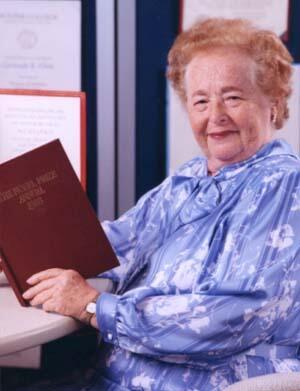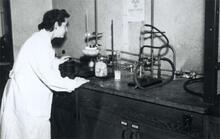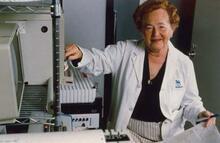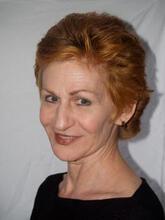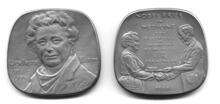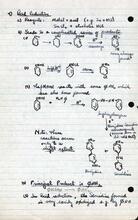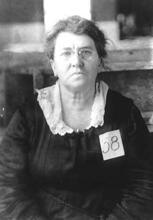Gertrude Elion
Struggling to find work as a chemist at a time when few women were welcome in the field, Gertrude Elion chose to focus on practical work in the lab rather than continue her education. She helped develop the first chemotherapy for childhood leukemia, the immunosuppressant that made organ transplantation possible, the first effective anti-viral medication, and treatments for many other diseases. She also believed strongly in mentoring and supporting those under her, encouraging them to publish and ensuring they received credit for their work instead of taking the credit she would normally be given as head of the lab where the work was done. The year after her retirement, Elion’s lab created AZT, the groundbreaking treatment for AIDS, based on her contributions.
Gertrude (“Trudy”) Belle Elion’s greatest legacy is the thousands of lives touched by the drugs she and her associates developed for the treatment of leukemia, gout, rejection of transplanted organs, and herpes, among other disorders.
Early Life and Education
Elion was born on January 23, 1918, in New York City, to Lithuanian immigrant dentist Robert and Bertha (Cohen) Elion. Her father came from a long line of rabbis. Elion’s intellect manifested itself at an early age; she was a voracious reader and an excellent student, graduating from Walton High School at age fifteen. Despite her father’s losses in the 1929 stock market crash, she was able to continue her education by qualifying for tuition-free Hunter College. The death of her beloved grandfather from stomach cancer, coupled with her aversion to animal dissection, led her to choose chemistry as “a logical first step in committing myself to fighting the disease.” Her younger brother Herbert chose engineering and physics.
Scientific Discoveries
Elion received her B.A. summa cum laude in 1937 but found work opportunities scarce for a woman chemist. After several unfulfilling jobs she entered graduate school at New York University, receiving her M.S. in 1941. During this period, she also suffered the death of her fiancé and never married. The manpower shortage of World War II proved a boon for Elion, as she found work as a quality control chemist at Quaker Maid Company, and then as a research chemist at Johnson & Johnson. She finally found a rewarding and challenging career in 1944 as a research chemist at Burroughs Wellcome, a noted pharmaceutical company, initially as assistant to George H. Hitchings, and later as head of experimental therapy, a post she held until her retirement in 1983. Elion never completed a Ph.D. She began the doctoral program at Brooklyn Polytechnic but was forced to leave after two years when the college dean made her choose between her education and her job.
At Burroughs Wellcome, Elion and her associates exploited the biochemical differences between normal cells and rapidly dividing, pathogenic cells such as cancer, bacteria, and viruses in order to develop new drugs. More specifically, purine compounds and their derivatives were used to inhibit the growth of such cells by blocking the synthesis of certain nucleic acids. This work resulted in chemotherapies for leukemia, immunosuppressive drugs for kidney transplants (azathioprine), treatments for gout, lupus, and severe rheumatoid arthritis, and the important antiviral drug acyclovir used to treat herpes. In addition, the techniques developed by Elion resulted in the development of the AIDS treatment AZT. Elion, Hitchings, and British chemist Sir James Black (discoverer of beta-blockers) shared the 1988 Nobel Prize for Physiology or Medicine “for their discoveries of important principles for drug treatment.”
Awards
In addition to the 1988 Nobel Prize and twenty honorary doctoral degrees, Elion received the Garvan Medal from the American Chemical Society (1968), the Sloan-Kettering Institute Judd Award (1983), the American Chemical Society Distinguished Chemist Award (1985), the American Association of Cancer Research Cain Award (1985), the American Cancer Society Medal of Honor (1990), and the National Medal of Science (1991). She was a member of the National Academy of Sciences, the American Academy of Pharmaceutical Scientists, the American Chemical Society, and the American Association of Cancer Research, of which she was president in 1983–1984. She also served on the boards of the National Cancer Institute, the American Cancer Society, and the Multiple Sclerosis Society. In 1991, she was the first woman inducted into the National Inventors Hall of Fame.
Gertrude Elion died on Sunday, February 21, 1999, in Chapel Hill, North Carolina, where she lived.
Selected Works by Gertrude Elion
“Antagonists of Nucleic Acid Derivatives. VI. Purines,” with George H. Hitchings and Henry Vanderwerff. Journal of Biological Chemistry 192 (1951): 505–518.
“Interaction of Anticancer Drugs with Enzymes.” In Pharmacological Basis of Cancer Chemotherapy (1975).
“The Purine Path to Chemotherapy.” Science 244 (1989): 41–47.
“Selectivity of Action of an Antiherpetic Agent, 9-(2-hydroxyethoxymethyl) guanine.” Proceedings of the National Academy of Sciences 74 (1977): 5716–5720.
“The Synthesis of 6-Thioguanine,” with George H. Hitchings. Journal of the American Chemical Society 77 (1955): 1676.
American Men and Women of Science, 1992–1993. 18th ed. Vol. 2 (1992).
Bailey, Martha J. American Women in Science (1994).
Biesele, John J., et al. “Studies on 2,6-Diaminopurine and Related Substances in Cultures of Embryonic and Sarcomatous Rodent Tissues.” Cancer 4 (1951): 186–197.
“Drug Pioneers Win Nobel Laureate.” New Scientist 20 (October 22,1988): 26–27.
“Garvan Medal—Gertrude B. Elion.” Chemical and Engineering News 46, no. 3 (1968): 65.
Graham, Judith, ed. Current Biography Yearbook (1995).
Holloway, Marguerite. “The Satisfaction of Delayed Gratification.” Scientific American 265 (October 1991): 40–44.
Marx, Jean L. “The 1988 Nobel Prize for Physiology or Medicine.” Science 242 (1988): 516–517.
McGrayne, Sharon Bertsch. Nobel Prize Women in Science (1993).
Schlessinger, B.S., and J.H. Schlessinger, eds. The Who’s Who of Nobel Prize Winners 1901–1990. 2nd ed. (1991).
St. Pierre, Stephanie. Gertrude Elion: Master Chemist (1993).
Yount, Lisa. Contemporary Women Scientists (1994).
Altman, Lawrence K. “Gertrude Elion, Drug Developer, Dies at 81.” New York Times, February 23, 1999.

